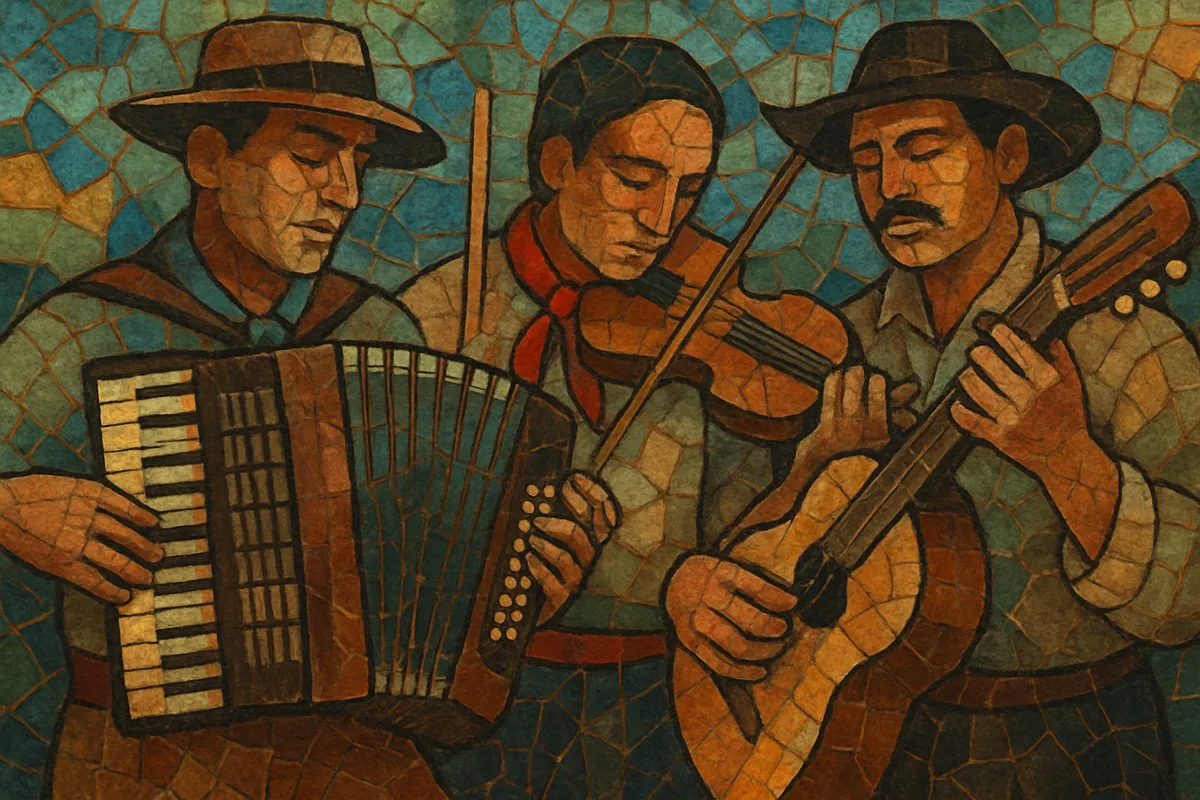Chamamé is a traditional dance-music style from Argentina’s Litoral region (especially the province of Corrientes) characterized by a flowing 6/8–3/4 sesquiáltera feel, expressive accordion or bandoneón melodies, and guitars providing rhythmic and harmonic support. It is music for dancing in couples, with a swaying, gliding motion that mirrors the riverine landscapes of the Paraná and Uruguay rivers.
The genre blends European social-dance influences (polka, schottische, mazurka, waltz) with Indigenous Guaraní aesthetics and language, often featuring the sapukai—a celebratory shout—within performances. Lyrically, chamamé is typically nostalgic and pastoral, evoking love, family, migration, and the natural environment, and it frequently mixes Spanish with Guaraní vocabulary.
Chamamé emerged in the Litoral region of northeastern Argentina, where Indigenous Guaraní culture intersected with waves of European immigration in the late 19th and early 20th centuries. Local musicians adapted European couple-dances—especially polka, schottische (chotis), mazurka, and waltz—to regional tastes, instrumentation, and the Guaraní rhythmic sense, creating a distinctive feel marked by 6/8–3/4 interplay (sesquiáltera) and lyrical themes tied to the riverine landscape.
By the 1920s and 1930s, as accordion and bandoneón became ubiquitous in the region, the term "chamamé" entered recorded catalogs and urban dance halls, helping codify the style’s name, ensemble format, and characteristic repertoire.
From the 1940s through the 1960s, chamamé matured on radio and records, as ensembles standardized around accordion/bandoneón, guitars, and double bass. Influential figures such as Tránsito Cocomarola, Ernesto Montiel (and the Cuarteto Santa Ana), Isaco Abitbol, and Tarragó Ros popularized defining pieces and performance practices. The music also migrated with workers to Buenos Aires and other cities, spreading beyond Corrientes while maintaining strong ties to its regional identity.
In the late 20th and early 21st centuries, virtuosos like Raúl Barboza and Chango Spasiuk brought chamamé to international stages, refining its concert presence while preserving its dance roots. Contemporary artists and ensembles have expanded the harmonic palette and arrangements, introduced new recording and amplification practices, and maintained bilingual (Spanish–Guaraní) songwriting. Today chamamé is celebrated at major festivals in Corrientes and throughout the Litoral, recognized as a living folk tradition that remains central to regional identity while resonating worldwide.


